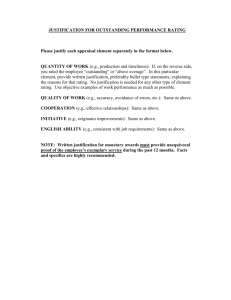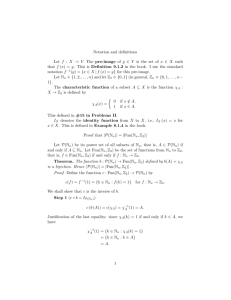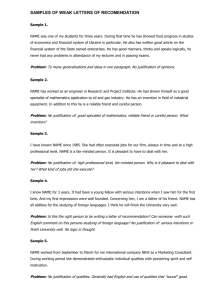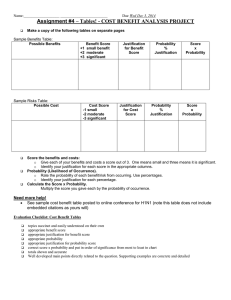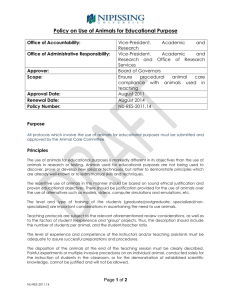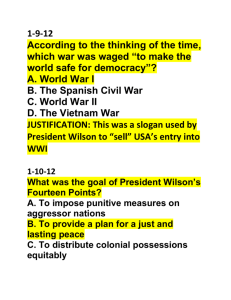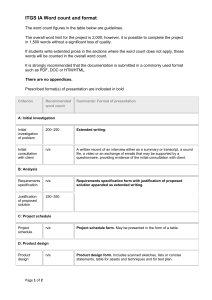CATEGORY OF STUDENTS' JUSTIFICATION AND ITS
advertisement
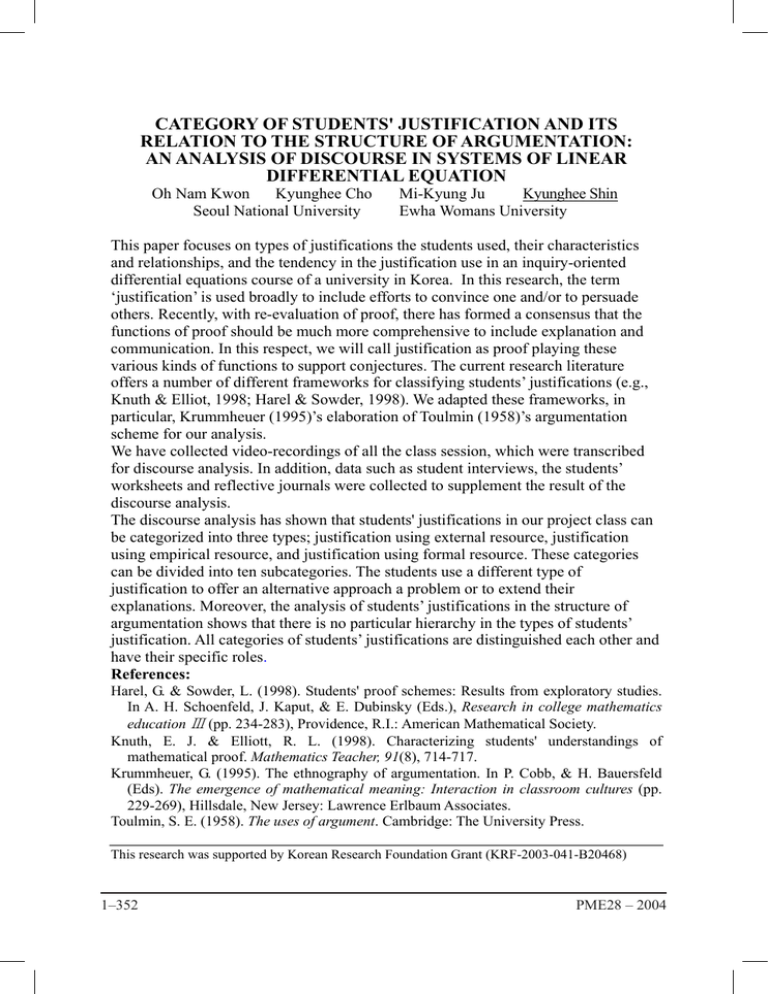
CATEGORY OF STUDENTS' JUSTIFICATION AND ITS RELATION TO THE STRUCTURE OF ARGUMENTATION: AN ANALYSIS OF DISCOURSE IN SYSTEMS OF LINEAR DIFFERENTIAL EQUATION Oh Nam Kwon Kyunghee Cho Seoul National University Mi-Kyung Ju Kyunghee Shin Ewha Womans University This paper focuses on types of justifications the students used, their characteristics and relationships, and the tendency in the justification use in an inquiry-oriented differential equations course of a university in Korea. In this research, the term ‘justification’ is used broadly to include efforts to convince one and/or to persuade others. Recently, with re-evaluation of proof, there has formed a consensus that the functions of proof should be much more comprehensive to include explanation and communication. In this respect, we will call justification as proof playing these various kinds of functions to support conjectures. The current research literature offers a number of different frameworks for classifying students’ justifications (e.g., Knuth & Elliot, 1998; Harel & Sowder, 1998). We adapted these frameworks, in particular, Krummheuer (1995)’s elaboration of Toulmin (1958)’s argumentation scheme for our analysis. We have collected video-recordings of all the class session, which were transcribed for discourse analysis. In addition, data such as student interviews, the students’ worksheets and reflective journals were collected to supplement the result of the discourse analysis. The discourse analysis has shown that students' justifications in our project class can be categorized into three types; justification using external resource, justification using empirical resource, and justification using formal resource. These categories can be divided into ten subcategories. The students use a different type of justification to offer an alternative approach a problem or to extend their explanations. Moreover, the analysis of students’ justifications in the structure of argumentation shows that there is no particular hierarchy in the types of students’ justification. All categories of students’ justifications are distinguished each other and have their specific roles. References: Harel, G. & Sowder, L. (1998). Students' proof schemes: Results from exploratory studies. In A. H. Schoenfeld, J. Kaput, & E. Dubinsky (Eds.), Research in college mathematics education � (pp. 234-283), Providence, R.I.: American Mathematical Society. Knuth, E. J. & Elliott, R. L. (1998). Characterizing students' understandings of mathematical proof. Mathematics Teacher, 91(8), 714-717. Krummheuer, G. (1995). The ethnography of argumentation. In P. Cobb, & H. Bauersfeld (Eds). The emergence of mathematical meaning: Interaction in classroom cultures (pp. 229-269), Hillsdale, New Jersey: Lawrence Erlbaum Associates. Toulmin, S. E. (1958). The uses of argument. Cambridge: The University Press. This research was supported by Korean Research Foundation Grant (KRF-2003-041-B20468) 1–352 PME28 – 2004
